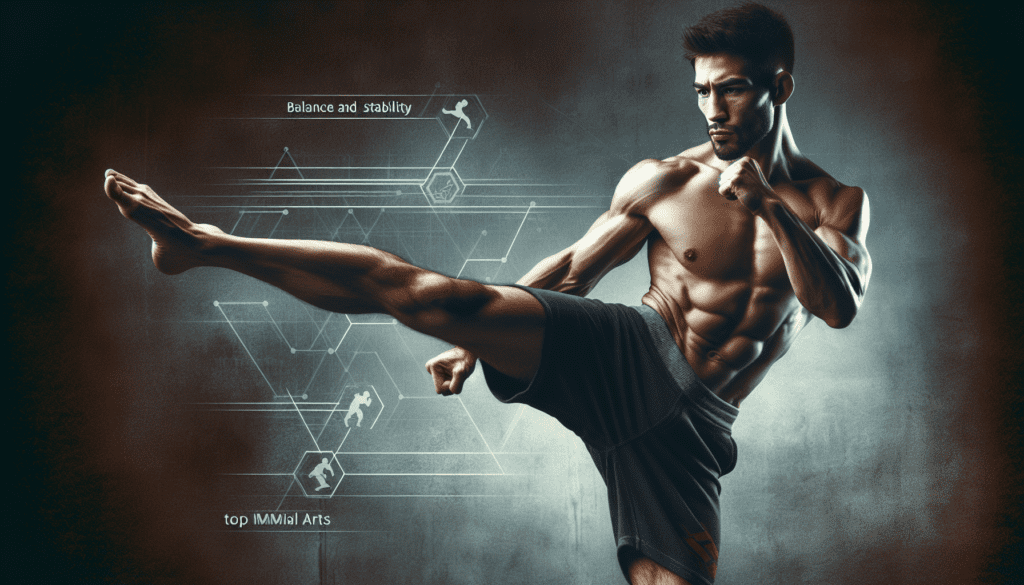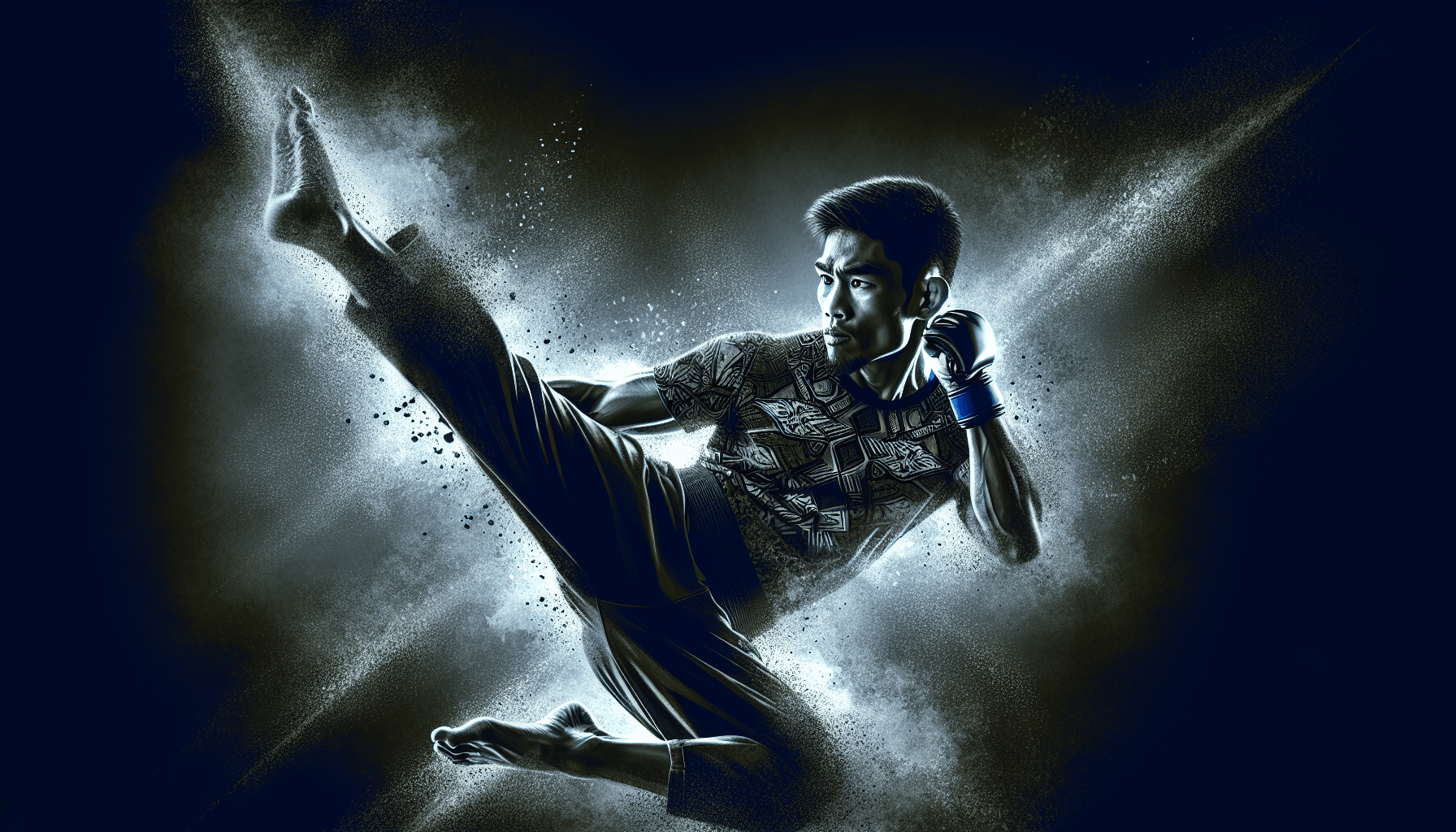Are you an MMA enthusiast looking to improve your balance and stability? Look no further! In this article, we will explore the top techniques for enhancing your balance and stability in MMA, helping you prevent injuries and perform at your best. Whether you are a beginner or an experienced fighter, these techniques will provide valuable insights and practical tips to elevate your skills in the ring. So, tighten your gloves and get ready to master the secrets of balance and stability in MMA!
1. Stance and Footwork
Proper Stance
Having a proper stance is crucial in MMA as it forms the foundation of your movements and provides stability and balance. To achieve a solid stance, stand with your feet shoulder-width apart, knees slightly bent, and your weight evenly distributed between both legs. Keep your hands up to protect your face and chin, and maintain a relaxed and alert posture. By starting every move with a correct stance, you set yourself up for better balance and stability throughout the fight.
Footwork Drills
In order to improve your footwork, incorporate different drills into your training routine. Perform ladder drills, where you move your feet in various patterns and directions, such as high knees, side shuffles, and quick steps. These drills enhance your coordination, agility, and foot speed, which are critical in finding your balance and staying light on your feet during a fight. Additionally, practice directional changes by moving forward, backward, and laterally while maintaining a balanced and stable position.
Circuits for Agility and Footwork
To further enhance your agility and footwork, incorporate agility circuits into your training. Set up cones or markers in a pattern that requires you to change directions quickly and perform different footwork techniques, such as pivots, circles, and jumps. Challenge yourself by increasing the speed and complexity of the circuit as you progress. By repeating these agility circuits regularly, you can improve your balance, coordination, and overall movement efficiency in the octagon.
2. Core Strengthening Exercises
Planks
A strong and stable core is vital for maintaining balance and stability in MMA. Planks are a highly effective exercise for strengthening your core muscles. To perform a plank, start in a push-up position with your forearms on the ground and elbows directly under your shoulders. Engage your core, keep your body in a straight line from head to toe, and hold this position for as long as possible without compromising your form. Regular plank practice will increase your core stability, which in turn enhances your balance and control during fights.
Russian Twists
Another excellent exercise for targeting your core is the Russian twist. Sit on the ground with your knees bent, feet flat on the floor, and lean back slightly while maintaining a straight posture. Holding a medicine ball, twist your torso from side to side, touching the ball on the ground beside you with each twist. This exercise engages your abdominal muscles, obliques, and lower back, providing greater stability and balance when executing MMA techniques.
Medicine Ball Throws
Adding medicine ball throws to your training routine not only strengthens your core but also improves your explosiveness and stability. Stand with your feet shoulder-width apart, holding a medicine ball at chest level. Explosively throw the ball forward, aiming for a target or a partner. Catch the ball as it rebounds and repeat the exercise for a set number of repetitions. The explosive nature of medicine ball throws activates your core muscles, helps develop power, and enhances your overall balance and stability during MMA movements.

3. Balance Training
Balance Exercises on Stability Ball
Incorporating a stability ball into your balance training regime can significantly improve your balance and stability in MMA. Perform exercises such as single-leg squats or standing on one leg while moving the stability ball with your hands. These exercises challenge your core, lower body strength, and proprioception, which is your body’s sense of its position and movement in space. By training on an unstable surface, you’ll develop greater balance, stability, and body control, translating into better performance in the octagon.
Single-Leg Exercises
Improving balance and stability can be achieved through specific single-leg exercises. Try exercises like single-leg deadlifts, single-leg squats, or single-leg balance holds. By focusing on one leg at a time, you challenge your stabilizing muscles and improve your ability to maintain balance during MMA techniques. These exercises also improve joint stability and increase proprioception, both of which are crucial for injury prevention and optimizing performance in combat sports.
Yoga and Pilates
Regular practice of yoga and Pilates can greatly contribute to your balance and stability in MMA. These disciplines emphasize body awareness, alignment, and controlled movements. Yoga poses, such as tree pose or warrior III, strengthen your legs, core, and provide an excellent balance challenge. Pilates exercises, like the hundred or leg circles, target your core muscles, enhancing stability and control. By incorporating these mind-body practices into your training routine, you’ll develop better overall balance, stability, and body control for MMA.
4. Plyometric Training
Box Jumps
Plyometric training is essential for developing explosive power and enhancing your balance and stability in MMA. One common exercise is box jumps. Start with a sturdy box or platform at a comfortable height. Jump onto the box using both feet, then step or jump back down to the starting position. As you progress, increase the height of the box and focus on landing softly and maintaining your balance upon landing. Box jumps improve your lower body strength, power output, and dynamic stability, all of which are vital in MMA movements.
Squat Jumps
Squat jumps are another plyometric exercise that targets your lower body strength, explosiveness, and balance. Begin by standing with your feet shoulder-width apart, lower into a squat position, and then explosively jump as high as possible. Land softly and immediately transition into the next repetition. Squat jumps not only strengthen your leg muscles but also train your body to absorb and control impact, enhancing your balance and stability during fights.
Lateral Bounds
Lateral bounds are an excellent plyometric exercise for improving agility, lateral movement, and overall balance. Start in a slight squat position with your feet hip-width apart. Explosively jump sideways, pushing off with one leg and landing on the other leg. Immediately jump back in the opposite direction, maintaining a controlled and balanced landing. Lateral bounds increase the strength and stability of your hips, legs, and ankles, improving your ability to change directions quickly and maintain balance during MMA techniques.

5. Proprioception Training
Bosu Ball Exercises
Using a Bosu ball is an effective way to incorporate proprioception training into your MMA workouts. Perform exercises such as single-leg squats or standing on one leg while balancing on the rounded side of the Bosu ball. This unstable surface forces your body to engage the stabilizing muscles, improving your balance, body awareness, and joint stability. Regular Bosu ball training enhances proprioception, making you more responsive and balanced in your movements during MMA.
Wobble Board Training
Wobble boards are excellent tools for proprioception and balance training in MMA. Stand on a wobble board with your feet shoulder-width apart and try to maintain your balance while the board tilts and moves. As you progress, challenge yourself by performing exercises such as squats or lunges on the wobble board. This training improves your body’s kinesthetic awareness, strengthens your stabilizing muscles, and improves your ability to balance while under dynamic conditions.
Balance Pad Workouts
Balance pad workouts are an effective way to develop better balance and stability in MMA. Stand on a balance pad with your feet shoulder-width apart and perform exercises, such as single-leg standing or squats, to challenge your balance. The soft and unstable surface of the pad engages your proprioceptive system, improving your body’s sense of position and movement. By regularly incorporating balance pad exercises into your training routine, you’ll enhance your balance, stability, and overall control during MMA techniques.
6. Coordination Drills
Agility Ladder Drills
Coordination drills using an agility ladder are essential for improving your footwork, coordination, and balance in MMA. Set up the agility ladder on the ground and perform exercises like high knees, lateral shuffles, or quick steps through the ladder. These drills enhance your agility, quickness, and foot-speed, allowing you to move fluidly and maintain balance during fights. The repetitive nature of agility ladder drills reinforces neuromuscular coordination, improving your overall performance in the octagon.
Speed Cone Drills
Speed cone drills are another effective way to enhance your coordination and footwork in MMA. Set up cones in a pattern that challenges your ability to change directions quickly and accurately. Practice drills such as 5-10-5 drills or T-drills, where you sprint to a cone, touch it, and then change direction to the next cone. These drills improve your coordination, agility, and spatial awareness, which are key components in maintaining balance and stability during fights.
Reaction Ball Training
Incorporating reaction ball training into your MMA training routine can significantly improve your coordination, reflexes, and balance. Use a small rubber reaction ball and bounce it off a wall or floor, reacting quickly to catch or hit it with your hands. As you progress, incorporate more complex patterns or perform the drills while standing on one leg to challenge your balance even further. Reaction ball training sharpens your hand-eye coordination, reaction time, and overall body control, enhancing your performance in various MMA techniques.
7. Flexibility and Mobility Exercises
Dynamic Stretches
Flexibility is crucial for maintaining balance and preventing injuries in MMA. Perform dynamic stretches before your training sessions to warm up your muscles and increase your range of motion. Dynamic stretches involve controlled movements that take your joints and muscles through their full range of motion, such as leg swings, arm circles, or walking lunges with a twist. These stretches promote blood flow, improve joint mobility, and prepare your body for the demands of MMA movements.
Foam Rolling
Foam rolling is an effective technique for improving flexibility and mobility by releasing muscle tension and knots. Use a foam roller to roll over different muscle groups, applying moderate pressure to target tight areas. Foam rolling helps break down adhesions and trigger points, improving muscle elasticity and range of motion, ultimately facilitating better balance and stability in MMA. Incorporate foam rolling into your warm-up or cooldown routine to enhance overall flexibility and reduce the risk of injuries.
Joint Mobility Exercises
Maintaining proper joint mobility is essential for optimal balance and stability in MMA. Perform exercises that target joint mobility, such as shoulder circles, hip circles, or ankle mobility drills. These exercises focus on the range of motion of your joints, enhancing flexibility, reducing stiffness, and allowing for greater fluidity of movements. Improved joint mobility contributes to better body control and stability, reducing the chances of injury during intense MMA training and fights.
8. Strength Training
Compound Exercises
Strength training plays a crucial role in developing stability and balance in MMA. Perform compound exercises, such as squats, deadlifts, or bench presses, which engage multiple muscle groups simultaneously. These exercises improve overall strength, enhance core stability, and create a solid foundation for balance and stability during MMA techniques. Incorporate compound exercises into your training routine, gradually increasing weights and focusing on maintaining proper form for optimal results.
Isometric Holds
Isometric holds are beneficial for developing static strength and enhancing stability in MMA. Perform exercises like planks, side planks, or wall sits, where you hold a position without movement for a specific duration. Isometric holds engage your muscles and core, improving strength and endurance, which are essential for maintaining balance and stability during fights. Incorporate these isometric exercises into your strength training routine to build a solid foundation for better performance in the octagon.
Functional Strength Training
Functional strength training focuses on improving strength and stability specific to the movements and demands of MMA. Incorporate exercises that mimic the movements you perform during fights, such as kettlebell swings, medicine ball throws, or resistance band exercises. These exercises engage multiple muscle groups and enhance your ability to generate power while maintaining balance and stability. By incorporating functional strength training, you’ll develop the strength and stability required for effective MMA techniques and injury prevention.
9. Injury Prevention Techniques
Proper Warm-Up and Cool-Down
To prevent injuries and maintain optimal balance and stability in MMA, it’s essential to include proper warm-up and cool-down routines in your training sessions. Prior to training, perform a dynamic warm-up, consisting of light cardio exercises, dynamic stretches, and movement-specific drills. This prepares your muscles, joints, and nervous system for the physical demands of MMA training. After your session, allow time for a cool-down, including static stretches and foaming rolling, to promote muscle recovery and minimize post-exercise muscle soreness.
Correct Technique and Form
Using correct technique and maintaining proper form during MMA techniques is vital for injury prevention and maintaining balance and stability. Work closely with a qualified coach or trainer who can guide you in performing techniques with proper alignment and execution. Focus on maintaining a strong and stable core, using proper body mechanics, and avoiding unnecessary movements that may compromise your balance and stability. Regular technical practice with attention to form will not only improve your skills but also reduce the risk of injuries.
Rest and Recovery Strategies
Rest and recovery are crucial for maintaining balance, preventing injuries, and optimizing performance in MMA. Allow your body sufficient time to recover between training sessions, ensuring you get enough sleep and proper nutrition to support muscle repair and growth. Incorporate rest days into your training schedule and consider including active recovery activities, such as yoga, swimming, or light mobility exercises. Prioritizing rest and recovery allows your body to rebuild, adapt, and improve, positively impacting your balance, stability, and overall performance in MMA.
10. Mental Focus and Visualization
Mindfulness Meditation
Mental focus and psychological stability are just as important as physical balance and stability in MMA. Mindfulness meditation can help improve mental clarity, reduce stress, and enhance focus during training and fights. Find a quiet space, sit comfortably, and focus on your breath, observing any thoughts or sensations without judging or reacting. Practicing mindfulness regularly can improve your ability to stay present, maintain composure, and make quick and accurate decisions in the fast-paced environment of the octagon.
Visualization Techniques
Visualization is a powerful tool that can improve your balance and stability in MMA. Visualize yourself performing techniques with precision and staying balanced and stable throughout the fight. Close your eyes and vividly imagine each movement, feeling the sensations and experiencing a successful outcome. Visualization helps program your mind for success, enhances your body’s kinesthetic awareness, and reinforces positive mental and physical patterns. Incorporate visualization into your training routine to improve your mental focus and enhance your overall stability and performance in MMA.
Mental Strength Training
Developing mental strength is essential for maintaining balance and stability in MMA. Engage in mental strength training activities, such as positive affirmations, goal setting, and positive self-talk. Embrace challenges and setbacks as opportunities for growth and learn to manage stress and pressure effectively. Develop a strong mindset that supports focus, resilience, and confidence in your abilities. Mental strength training enhances your ability to stay composed, maintain balance, and make sound decisions during intense moments in MMA fights, ultimately improving your stability and success in the sport.
In conclusion, achieving balance and stability in MMA requires a comprehensive approach that addresses physical, mental, and technical aspects. By incorporating techniques such as proper stance and footwork, core strengthening exercises, balance training, plyometric training, proprioception training, coordination drills, flexibility and mobility exercises, strength training, injury prevention techniques, and mental focus and visualization, you can enhance your overall stability, reduce the risk of injuries, and improve your performance in the octagon. Remember to approach each technique with patience, consistency, and a friendly mindset, and enjoy the journey of becoming a more balanced and stable fighter.

